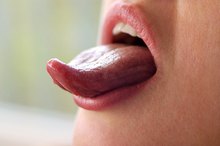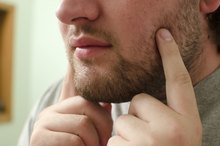Exercises to Completely Stop Snoring
Snoring not only keeps you and your spouse up at night — it can be dangerous to your health. Loud snoring can increase your daytime fatigue and cause you to stop breathing as you sleep, which can affect your heart 1. If you snore with your mouth closed, this can indicate a problem with your tongue positioning. On the other hand, sleeping with your mouth open may indicate a throat issue, HelpGuide.org states. You can remedy these types of snoring by performing regular exercises to boost muscle control in the throat and tongue.
Vowel Repetition
You can strengthen muscles in the upper respiratory tract by exercising. This exercise from HelpGuide.org helps strengthen muscles in the upper respiratory tract. Spending 30 minutes per day performing these and other exercises can help reduce snoring. The first exercise is to repeat the vowels of the alphabet aloud for 3 minutes at a time each day. Practice saying “A-E-I-O-U” slowly at first, then increase the speed to boost your muscle control. Continue repeating for a period of 3 minutes.
- You can strengthen muscles in the upper respiratory tract by exercising.
- Spending 30 minutes per day performing these and other exercises can help reduce snoring.
Tongue Slide
Throat Exercises to Reduce Snoring
Learn More
This exercise from HelpGuide.org is performed for a duration of 3 minutes. Begin by placing the very tip of your tongue in the area just behind your upper front teeth. Move your tongue backward, toward your uvula, the soft tissue dangling from the back of your tongue. Then return to your starting position when you have reached the furthest point at the back of your mouth.
- This exercise from HelpGuide.org is performed for a duration of 3 minutes.
- Then return to your starting position when you have reached the furthest point at the back of your mouth.
Lip Purse/Close
This exercise from Dr. Dan Peterson of Family Gently Dental Care should be repeated five times and can be performed twice daily to help reduce snoring. Begin by opening your mouth as far as you can, then closing your mouth by fully pressing the lips together. Next, pucker your lips as if you're giving a kiss and hold for 10 seconds. Relax your mouth and repeat the sequence by opening and closing your mouth.
- This exercise from Dr. Dan Peterson of Family Gently Dental Care should be repeated five times and can be performed twice daily to help reduce snoring.
- Begin by opening your mouth as far as you can, then closing your mouth by fully pressing the lips together.
Jaw Slide
Exercises to Improve Facial Muscle Tone for Speech Therapy
Learn More
This exercise from HelpGuide.org begins with moving the jaw from side to side 1. Open your mouth slightly and move the jaw to the right and hold this stretch for 30 seconds. Release and repeat on the left side, holding again for 30 seconds.
Singing
Singing out loud can help improve muscle control in your throat and in the soft palate, the area in the back of your throat that can reverberate when your snore, HelpGuide.org states. Turn on your favorite music and “exercise” your vocal cords to reduce snoring.
Related Articles
References
- Helpguide.org: How to Stop Snoring
- Dempsey JA, Veasey SC, Morgan BJ, O'Donnell CP. Pathophysiology of sleep apnea. Physiol Rev. 2010;90(1):47–112. doi:10.1152/physrev.00043.2008
- Jean-Louis G, Zizi F, Clark LT, Brown CD, McFarlane SI. Obstructive sleep apnea and cardiovascular disease: role of the metabolic syndrome and its components. J Clin Sleep Med. 2008;4(3):261–272.
- KidsHealth. Snoring.
- Kim KS, Kim JH, Park SY, et al. Smoking induces oropharyngeal narrowing and increases the severity of obstructive sleep apnea syndrome. J Clin Sleep Med. 2012;8(4):367–374. Published 2012 Aug 15. doi:10.5664/jcsm.2024
- Issa FG, Sullivan CE. Alcohol, snoring and sleep apnea. J Neurol Neurosurg Psychiatry. 1982;45(4):353-9. doi:10.1136/jnnp.45.4.353
- Ciprandi G, Gelardi M. Open and clean: the healthy nose. Acta Biomed. 2019;90(2-S):4–6. Published 2019 Jan 14. doi:10.23750/abm.v90i2-S.8104
- Shukla AD, Jain S, Mishra R, Singh AK. Does 'weight reduction' help all adult snorers? Lung India. 2013;30(1):16–19. doi:10.4103/0970-2113.106123
- Small P, Keith PK, Kim H. Allergic rhinitis. Allergy Asthma Clin Immunol. 2018;14(Suppl 2):51.doi:10.1186/s13223-018-0280-7
- Souza FJFB, Genta PR, de Souza Filho AJ, Wellman A, Lorenzi-Filho G. The influence of head-of-bed elevation in patients with obstructive sleep apnea. Sleep Breath. 2017;21(4):815–820. doi:10.1007/s11325-017-1524-3
- de Felício CM, da Silva Dias FV, Trawitzki LVV. Obstructive sleep apnea: focus on myofunctional therapy. Nat Sci Sleep. 2018;10:271–286. doi:10.2147/NSS.S141132
- Tien DA, Kominsky A. Managing snoring: when to consider surgery. Cleve Clin J Med. 2014;81(10):613-9. doi:10.3949/ccjm.81a.13034
- Kryger, M.H. et al. "Principles and Practice of Sleep Medicine." ExpertConsult, 5th edition, 2011.
Writer Bio
Rachel Nall began writing in 2003. She is a former managing editor for custom health publications, including physician journals. She has written for The Associated Press and "Jezebel," "Charleston," "Chatter" and "Reach" magazines. Nall is currently pursuing her Bachelor of Science in Nursing at the University of Tennessee.








